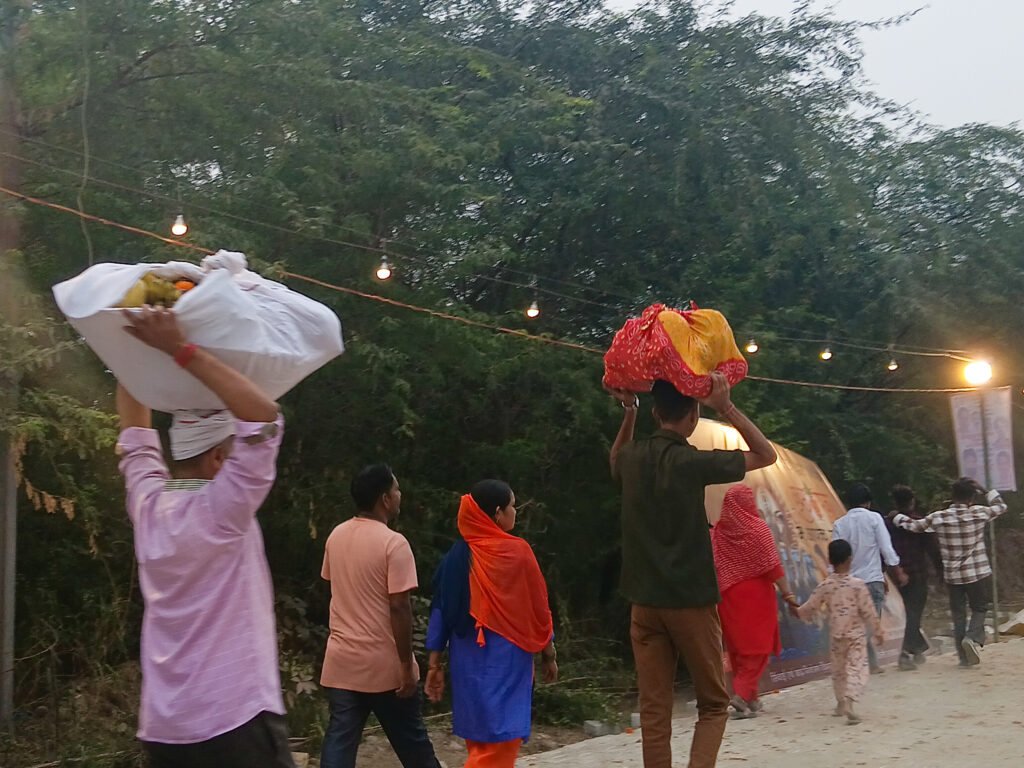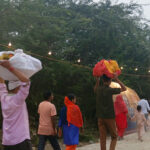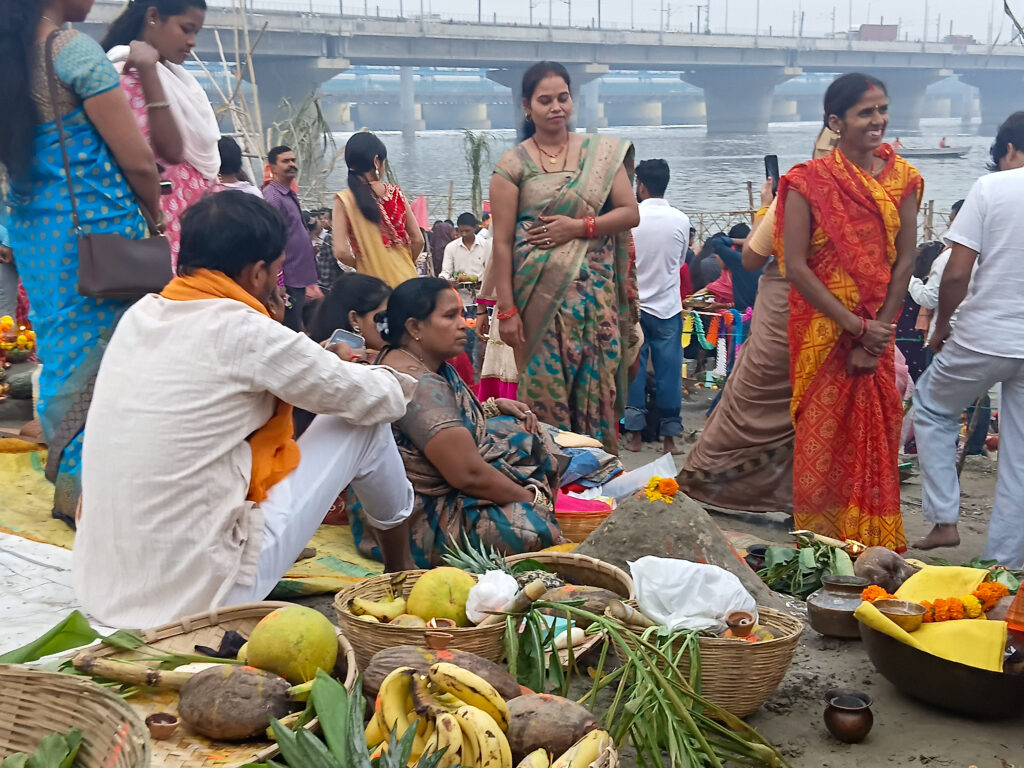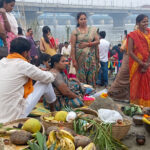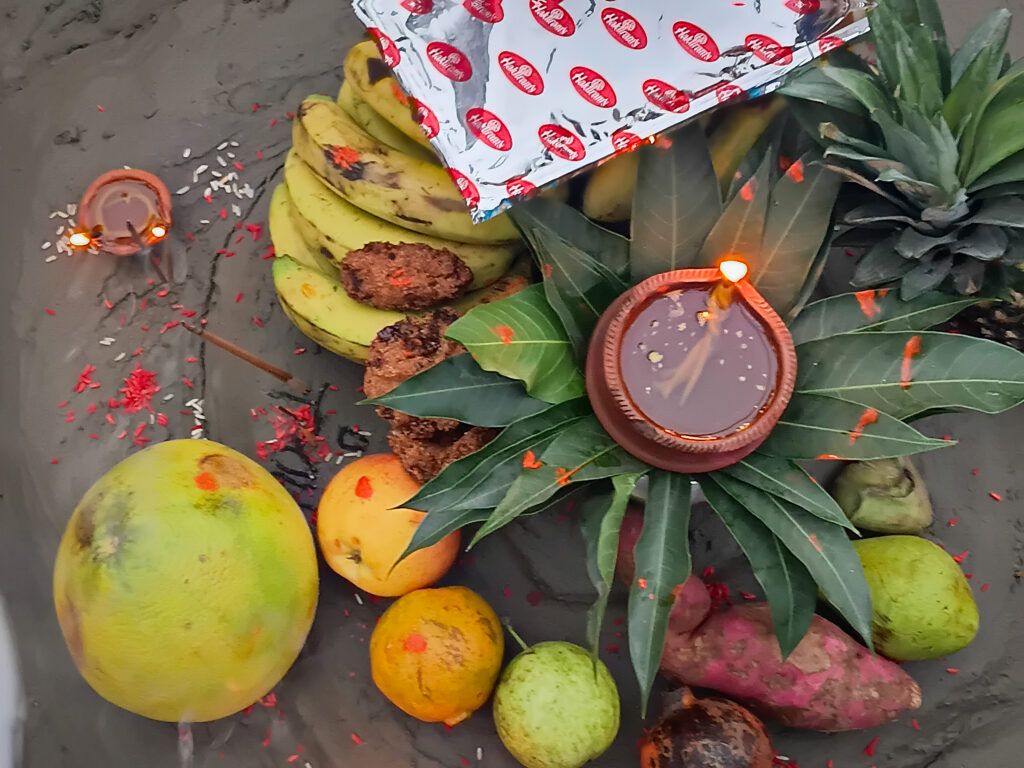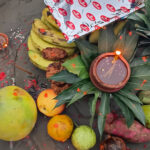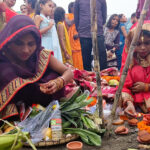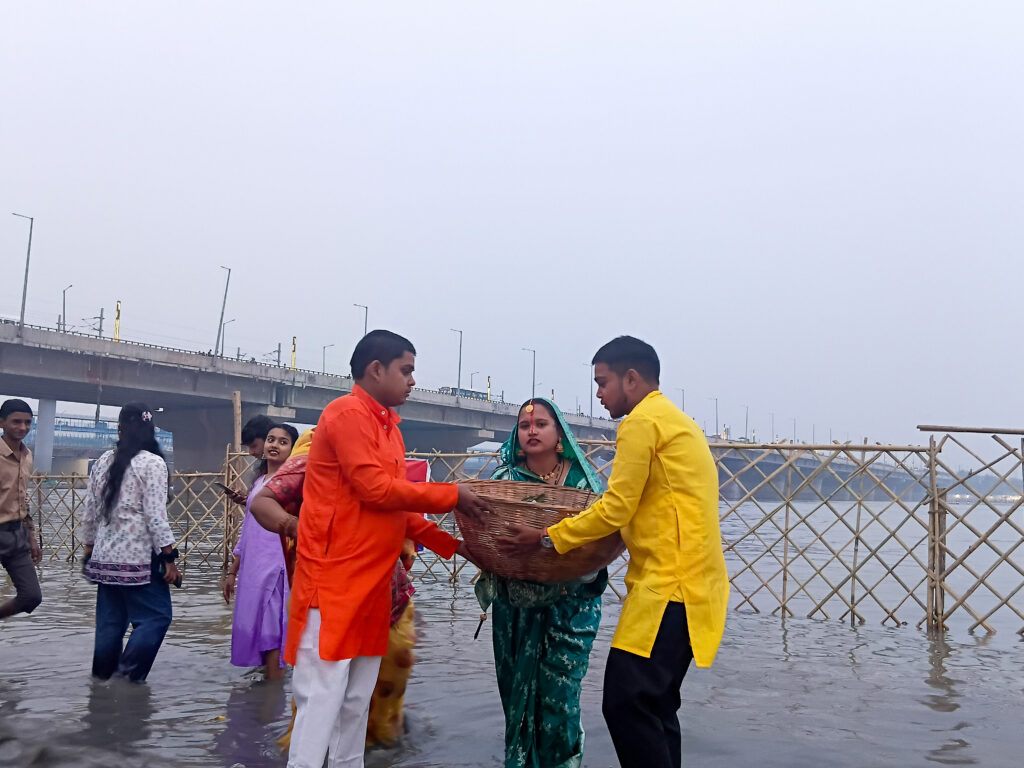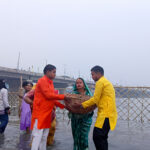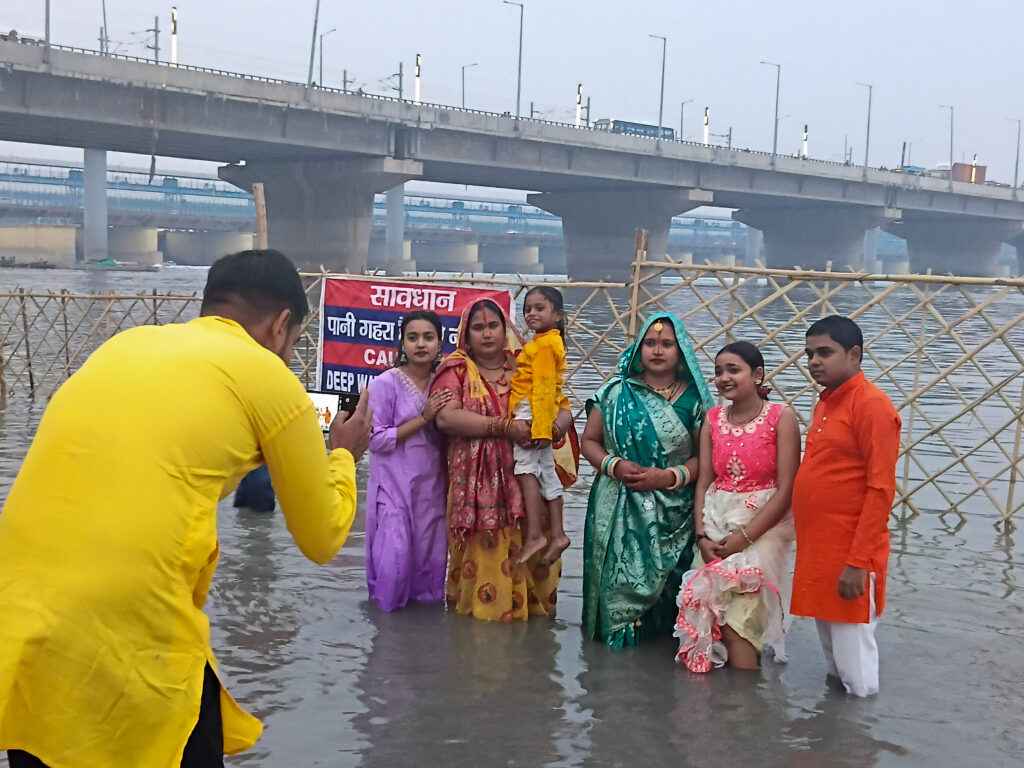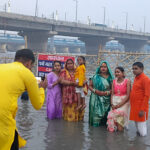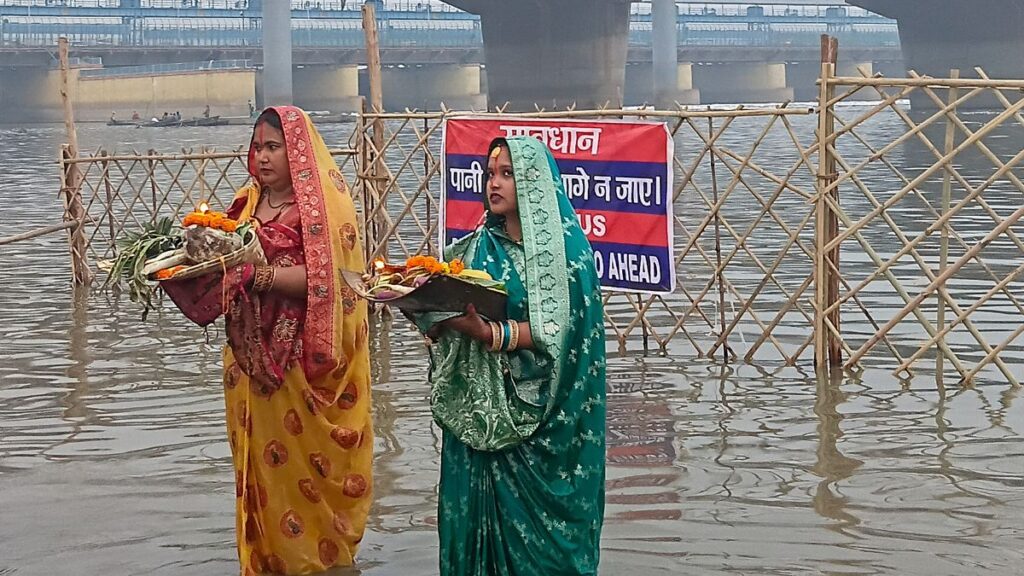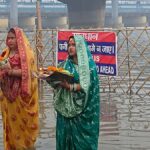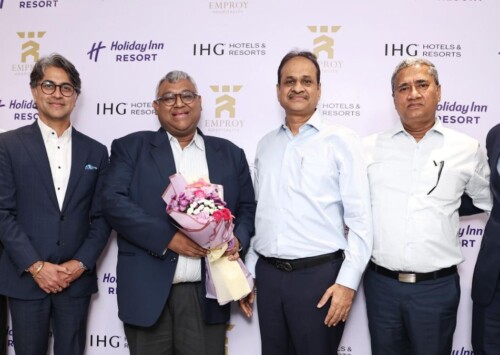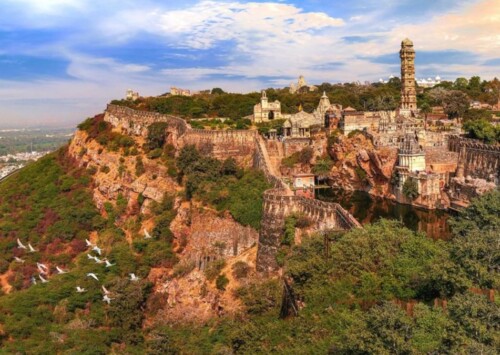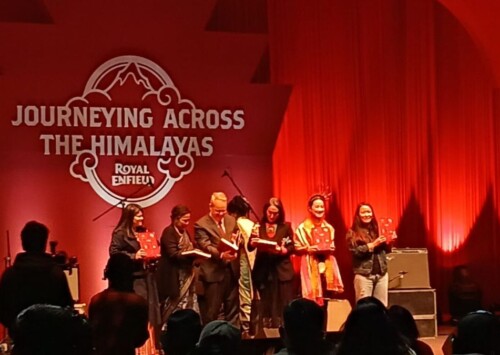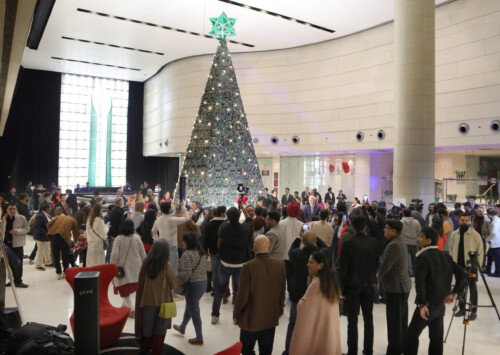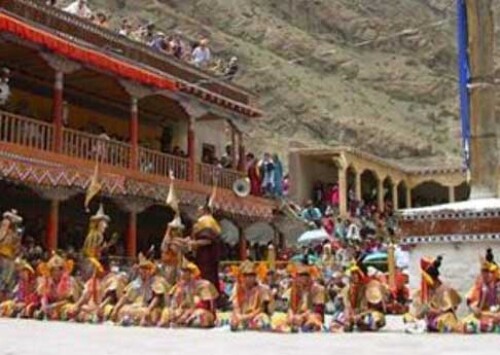Thousands celebrate Chhath Puja in Delhi with devotional dips in Yamuna
Yamuna Ghat reopens for the festival after Covid-19
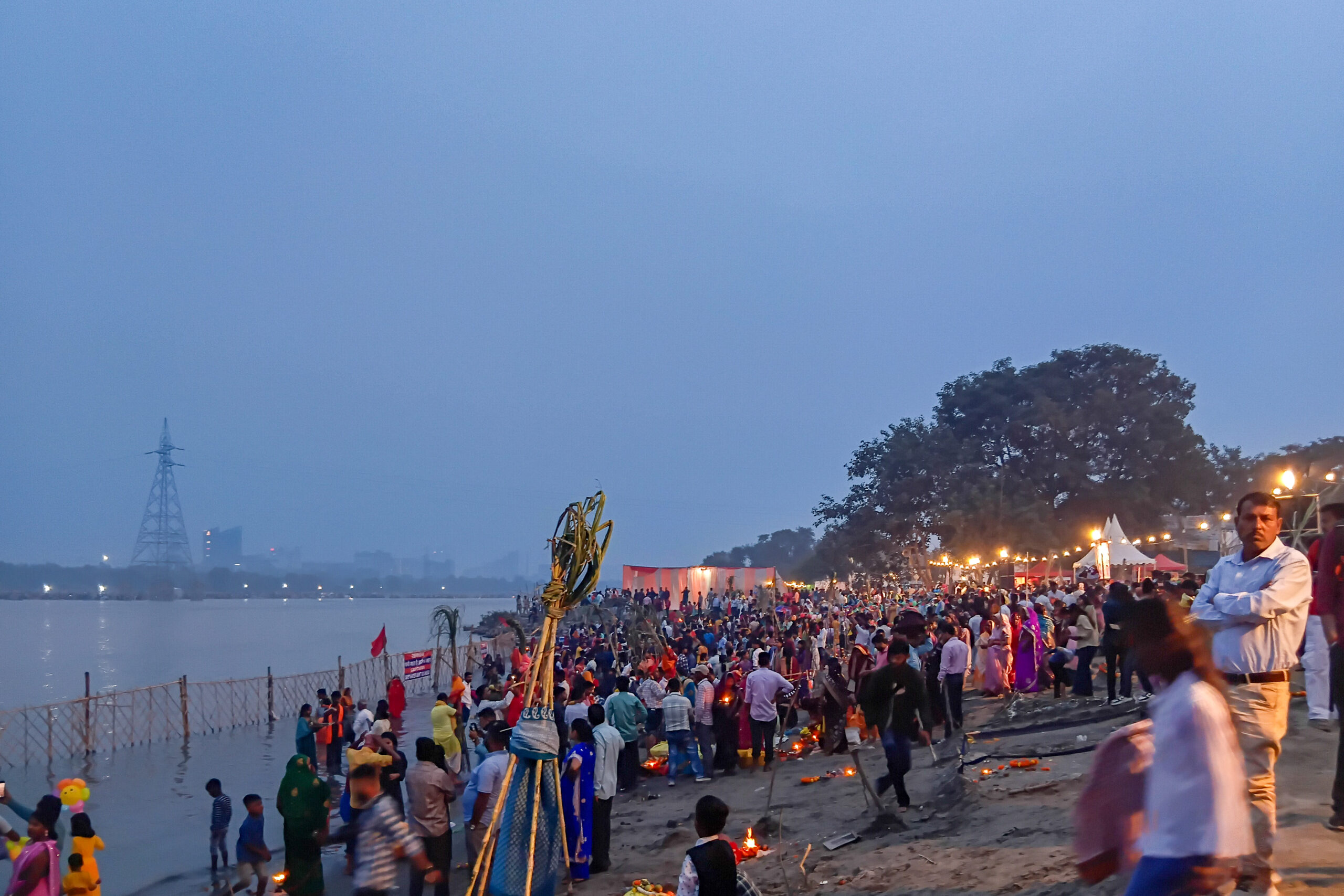
Crowd gather at the Yamuna Ghat for Chhath Puja celebrations (Photos: Media India Group/ Archita Lakhotia)
Thousands of persons, wrapped in festive clothes, carrying their offerings gathered along the riverbanks of the Yamuna Ghat to honour the Sun God and marked a renewed spirit of cultural togetherness.

Crowd gather at the Yamuna Ghat for Chhath Puja celebrations (Photos: Media India Group/ Archita Lakhotia)
Kalindi Kunj, a vibrant locality in South-East Delhi situated along the banks of the Yamuna River, witnessed one of the most eagerly awaited and colourful festivals, Chhath Puja, celebrated to honour the Sun God.
While Kalindi Kunj stood out as a major hub of the festivities, other prominent locations, along the river, such as ITO, Burari, Okhla Ghat, and Vasudev Ghat also became focal points for the grand celebrations.
The four-day festival, observed this year from October 25 to October 28, attracted an exceptionally high turnout, as the Yamuna Ghats reopened for devotees after a five-year hiatus, for first time since the devastating Covid-19 pandemic had swept across the country.
Many believe that Chhath Puja finds its sacred origins in the Rig Veda, while others trace its ancient roots to the revered Indian epics, the Ramayana and the Mahabharata.
Celebrated on the sixth day of the Kartik month, the festival is also called Surya Shashti, a ritualistic bathing festival. At the centre of celebrations is Chhathi Maiya, or Mother Chhathi, considered the benevolent sister of the Sun, who is worshipped as the generous and nurturing deity.
On the first day, also called Nahay Khay, devotees purify their homes, partake in a light, sattvic meal, made of easy digestible vegetables without the use of onion and garlic and take a holy dip in the sacred river.
Also Read Air India, Air India Express add flights to Patna for festive rush
The second day, Kharna, sees devotees observing a strict day-long fast, broken in the evening with traditional offerings. Indian delicacies like Kheer, a rich and creamy rice pudding, along with fresh fruits, are first offered to the fasting family members and subsequently shared with others, symbolising devotion, gratitude, and togetherness.
The third day, Sandhya Arghya, marks one of the most significant and visually enchanting days of the festival. Devotees gather along the riverbanks to make offerings to the setting sun. water, and mark the joyous conclusion of the festival.
The atmosphere at Yamuna Ghat comes alive with folk songs and the spirited rhythms of traditional music, played by musicians who beautifully display the cultural heritage and history of the eastern region of India, notably Bihar and Uttar Pradesh, where Chhath Puja is most-widely celebrated. In the evening, intricate canopies made from sugarcane sticks are adorned with flickering earthen lamps, placed inside baskets filled with prasad, creating a magical, luminous spectacle.
The final, fourth day, Usha Arghya, begins before sunrise. Family members and friends assemble at the ghat to offer Arghya to the rising sun, culminating the 36-hour-long nirjala fast, without food and water.
Also Read Hidden strokes: India’s lesser-known art traditions
While Chhath Puja holds a deeply spiritual significance, it is also a cultural anchor for migrants from Bihar and UP, allowing them to reconnect with their roots and immerse themselves in vibrant traditions.
Beyond the rituals, the festival embodies values of gratitude, prosperity, longevity, and well-being, delivering a timeless message: everyone is equal in the eyes of God, and nature must be revered and honoured.

